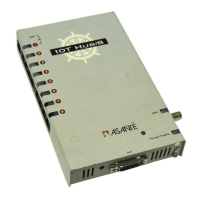Page 1-2
Planning a Network Installation
Before You Start
An efficient network that will serve your long-term needs requires thorough
planning. This chapter discusses some of the topics that are important in the
early stages of network development. The topics are arranged in chronologi-
cal order. You should read this entire chapter to get an overview of the
details involved in planning your network.
To help you understand how devices in a building can be networked, con-
sider how buildings are wired for telephone service. Buildings are usually
wired for telephones in a star topology: wires run from one or more central
locations called wiring closets to wall jacks in each office.
With 10BaseT, this installed telephone wire can often be used for local area
networks. This makes installation and maintenance much simpler and less
expensive.
A small building may have only one wiring closet; large buildings often have
multiple wiring closets which are interconnected. Multi-story buildings usu-
ally have at least one wiring closet on each floor. The wall jacks on a floor are
connected to the wiring closet(s) on that floor. The wiring closets in a multi-
story building are often connected in a hierarchy. For example, a ten story
building might have a main wiring closet in the basement connected to ten
satellite wiring closets (one on each floor).
The 10T Hubs are well suited to build networks or subnetworks of 50 nodes
or less. If you plan to implement a large network with hundreds of devices,
you may consider investing in the Asanté intelligent hubs and a consultant to
help you design your network.
When you are ready to plan your installation, start here:

